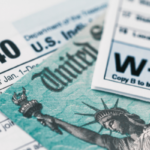Top 10 Tips About 1031 Exchanges for 2024: Reinvesting Rules With CAPATA
Navigating the intricacies of 1031 Exchanges can be a daunting task, especially with the ever-evolving rules and regulations that govern this valuable tax-deferral strategy. For real estate investors looking to maximize their financial benefits while deferring capital gains taxes, understanding the nuances of 1031 Exchanges is crucial. In 2024, staying informed about the latest reinvesting rules is more important than ever. Below, we dispel some common misconceptions and clarify essential tips to help you make the most of your 1031 Exchange transactions. Here are the top 10 tips to guide you through the process and ensure you adhere to the current regulations.
Tip 1. Reinvesting Proceeds
Misconception: I only need to reinvest my cash OR only need to reinvest my gain.
Truth: In a 1031 Exchange, you must reinvest the entire proceeds from the sale of your property, not just the cash or the gain. To fully defer your taxes, all the money from the sale must be used to purchase new like-kind property of equal or greater value. Additionally, you need to replace any debt from the sold property. If you don’t reinvest all the proceeds or the new property’s value is less than the original one, any leftover funds (known as “boot”) may be taxed, resulting in a partial exchange instead of full tax deferral.
Tip 2. Tax Deferral
Misconception: I never have to pay taxes on a 1031 Exchange.
Truth: Section 1031 allows for tax deferral, not elimination. When you eventually sell your Replacement Property, unless it’s part of another 1031 Exchange, you will owe the deferred taxes from previous exchanges. Depreciation deductions taken on the investment property will be recaptured and taxed as well. If you hold the property until your death, your heirs may receive a “step-up” in basis to the property’s current market value at inheritance, potentially eliminating most or all capital gains taxes for them
Tip 3. ID Deadlines & Timing Rules
Misconception: The 45th day is flexible.
Truth: The 45-day rule mandates that taxpayers identify the property or properties they plan to purchase within 45 days of closing on their Relinquished Property. Except for IRS-granted extensions due to disasters, there are no extensions for the 45-day Identification period. Failure to comply with the Tax Code rules will disqualify the 1031 Exchange, leading to tax liability on the proceeds intended for deferral.
Tip 4. Replacing Debt
Misconception: I’ve paid off my loan at the closing of my Relinquished Property and now I don’t have any more debt to replace.
Truth: For full tax deferral in a 1031 Exchange, you need to replace the value of any debt paid off on the Relinquished Property. This doesn’t mean you have to take on new debt; you can use your own cash or other financing options to match the value. Options include personal funds, seller financing, or loans from private parties or banks. The key is that the total investment in the new property matches or exceeds the value of what you sold, including both equity and any paid-off debt.
Tip 5. Holding Periods
Misconception: I can sell a property acquired in a 1031 Exchange at any time after my exchange.
Truth: There is no strict IRS-mandated minimum holding period for Replacement Property, but selling too soon may raise questions about your intent to hold the property for investment purposes, a requirement for 1031 qualification. Holding the Replacement Property for at least one to two years is generally advised to demonstrate investment intent. Consult with a tax advisor before listing property acquired through a 1031 Exchange.
Tip 6. Exchange Funds
Misconception: After I begin my 1031 Exchange, I can cancel at any time and request that the 1031 Qualified Intermediary return my funds.
Truth: The Tax Code does not permit canceling a 1031 Exchange at any time. Restrictions on accessing funds depend on the stage of the exchange process. The “(g)(6)” rules under Section 1031 specifically limit when and how you can receive your money back if the exchange does not proceed as planned. Reviewing these rules is crucial when deciding to structure your sale as a 1031 Exchange
Tip 7. Related Parties
Misconception: I can sell my current investment property to a family member or purchase new property from a family member and have a successful 1031 Exchange.
Truth: While it’s possible to engage in transactions with family members as part of a 1031 Exchange, there are strict rules and potential pitfalls. The IRS closely scrutinizes these transactions to ensure they are not used to circumvent tax laws, a practice known as “basis shifting.” Careful planning and adherence to IRS regulations are necessary to avoid disqualification and unintended tax consequences.
Tip 8. Vacation Home Qualification
Misconception: I have never rented out my vacation home that my family and friends use regularly. It qualifies for a 1031 Exchange since it’s an investment property.
Truth: For a property to qualify for a 1031 Exchange, it must be held for investment purposes or used in a trade or business. If your vacation home is only used personally and never leased, it does not qualify as an investment property. The IRS requires that properties in a 1031 Exchange be held primarily for investment or productive use in a trade or business, not personal use. To potentially qualify, you would need to lease the vacation home and limit personal use according to IRS criteria.
Tip 9. Partnerships
Misconception: A partnership can sell its investment property and each partner can do their own 1031 Exchange with their portion of the proceeds.
Truth: The IRS does not allow the exchange of partnership interests under Section 1031, meaning individual partners cannot set up separate 1031 Exchanges based on their share of partnership property. However, with advanced planning using strategies like “drop and swap,” each partner may be able to set up their own 1031 Exchange. Given the complexities, consulting with a tax advisor is strongly suggested.
Tip 10. Reverse Exchanges
Misconception: If I need to set up my 1031 as a Reverse Exchange, it will be relatively easy to obtain financing.
Truth: A Reverse Exchange allows acquiring new Replacement Property before selling Relinquished Property to obtain tax deferral. While permitted by the IRS, Reverse Exchanges are more complex than traditional 1031 Exchanges and present unique challenges, including obtaining financing. Lenders may have stricter requirements, demand higher down payments, or offer less favorable loan terms compared to standard purchase loans. Specialized lenders familiar with 1031 Exchanges might be necessary. Consulting with tax professionals before signing purchase or sale contracts for a Reverse Exchange is crucial.
Closing Thoughts
Understanding and correctly navigating the complexities of 1031 Exchanges is essential for maximizing the benefits and deferring taxes. From ensuring all proceeds are reinvested to adhering to strict deadlines and recognizing the importance of replacing debt, each step plays a crucial role in the process. Missteps can lead to significant tax consequences, so thorough planning and consultation with tax professionals are advised. If you have any further questions or need assistance with your 1031 Exchange, please reach out to adminteam@capatacpa.com.
Maximize your 1031 Exchange Benefit— Get Expert Guidance with CAPATA




